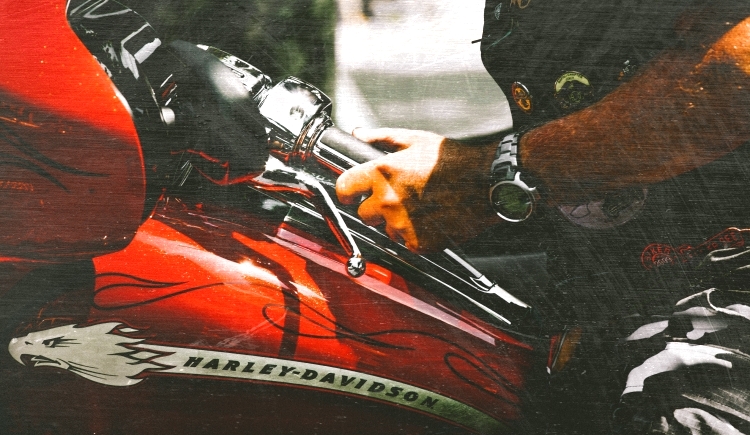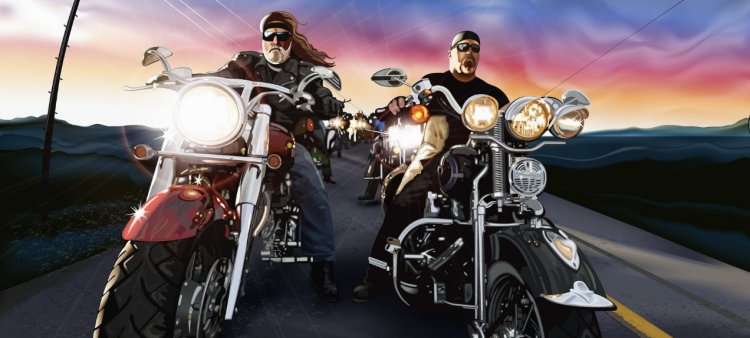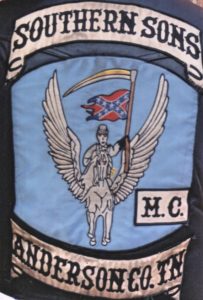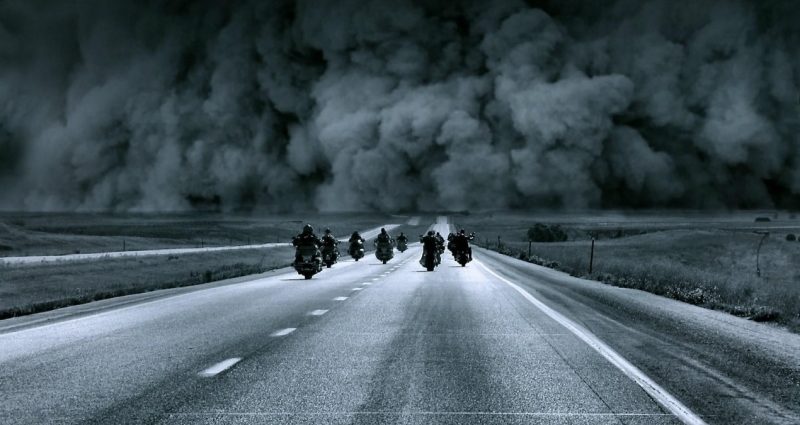Things happen at night in the holler. Bad things. Of course, that goes for big cities, too. But we all know hollers have no street lights or city lights and nighttime is pitch-black along those meandering dirt roads. Nightfall covers a multitude of sins like a cozy patchwork blanket. It’s true, I think, what the proverbial “they” say: When one sense is missing, another becomes sharper.When dark time covers the eyes, one’s hearing becomes very acute. For example: When I was a little girl of about eight or nine, a man shot and killed his wife one night down the holler, with his two children in the back seat witnessing the whole thing. The children escaped through the woods and he pursued them. The man wandered across our property, gun in hand, searching for those children, who, by that time, had found safety in another home. Through the darkness and nighttime silence, his footsteps echoed atop our long, brick walkway, clear and confident, with a gritty click-clack . . . click-clack . . . The man was caught soon after, but all I could think about was how he’d tried to kill his kids and, well, I was a kid. What if, by some fluke, I’d been outside?

Yes, one’s hearing does become more acute in the darkness. Also in those days, Zinn’s Beer Joint sat on the hilltop about an eighth of a mile before our dirt road. (Bars are “beer joints” in the holler.) Every Friday and Saturday night, the thunderous, throaty roar of a dozen or more Harley Davidsons resounded through the holler and stopped at Zinn’s. Not long after that, bikers’ voices filled my ears with loud and rowdy times. I could even make out a few fights. It scared the bejesus out of me. Given that earlier experience, I was sure the people attached to those booming voices would find their way to our house.
Sometimes, I overheard adults talking about the bikers (my father, who was in law enforcement, included). Children are an impressionable little lot, and, whenever I heard adults around me discuss those bikers, I caught the words “Southern Sons” and “motorcycle gang” and “fights” and “the law.” Their discussions and descriptions only worsened my nighttime anxiety.
As time passed, however, I realized there was so much I didn’t know. I grew into a person who isn’t influenced by others’ gossipy opinions about persons or people. I simply find out for myself by getting to know them. Going back to those raucous sounds in the dark holler. Though I was afraid, I was also curious. After all, I heard laughter, too.
Recently, Appalachia Bare had the pleasure and honor of interviewing a retired member of the Southern Sons, a man we’ll call “Rider.” He was engaging and witty, and patiently answered our questions. His words and explanations were eye-opening to say the least. Join us in the next two posts as we delve just below the surface of the Southern Sons.
As we begin, it’s important to understand the differences among motorcycle groups. Riding Clubs (RC) are a group of people who get together to ride motorcycles. They aren’t as structured and don’t necessarily adhere to any set rules or ride a certain motorcycle make. My aunt and uncle, for example, are in a Riding Club. They get together with a group of people and ride on occasion.
Other motorcycle groups are more structured with rules, mandatory events, etc. Rider breaks down the groups’ acronyms on particular patches:
- Motorcycle Club = MC
- Motorcycle Brotherhood (military) = MB
- Motorcycle Gang = MG
The Southern Sons is a Motorcycle Club (MC).
. . . So, let’s put on our riding clothes, strap on our helmets, and let Rider take us on a metaphorical journey with his own words, interspersed with information gathered from the interview.
Now – Let’s ride . . .

. . . A group of us got together here in this county [Anderson] and talked about formin’ a chapter. In them days, you had to have permission to start a motorcycle club. Evidently, it’s not that way now, ‘cause when we started our chapter here in ’93, there was, uh, now let’s see Outlaws, Peacemakers, True Sons, Southern Sons . . . There was four different clubs, basically, in East Tennessee. Now there’s thirty-somethin’. – Rider
East Tennessee’s Southern Sons began with the LaFollette Chapter in Campbell County. About five or six years after LaFollette formed, a group in Anderson County convened and began their own process. After receiving permission to establish their own club, they approached the Southern Sons in LaFollette, who voted to admit a new Anderson County Chapter, formed June 13, 1993.1)Had they not approached the LaFollette Chapter, Rider explains: “Otherwise we’d just had to have made our own patch and, you know, we’d been a whole separate entity, but it kinda made more sense for us to go with them. They were already established, you know. And it give a chance for them to grow out & be seen a little more, you know . . .” In subsequent years, East Tennessee’s Southern Sons would add two new chapters: Scott County and Morgan County.
The Anderson County Chapter runs autonomously, for the most part, making their own decisions within the group. They are also “incorporated in the state of Tennessee.” This process was done for liability protection. A person or persons can hold the “corporation” liable but not the individual.
A few years ago, the Chapter celebrated their 25th anniversary with shots from a bottle of five-year-old “Southern Sons Tequila,” a gift from the lawyer who processed their incorporation. Rider described the liquor thusly: “It was some nasty shit.”
We just wanted to have fun and have somewhere to go, you know . . . If I wanna go somewhere and drink twelve beers, I don’t have to get on the road. But . . . it’s a lot of a comradery thing, you know. And there’s nothin’ like ridin’. They ain’t nothin’ like bein’ out in the wind. Nothin’ at all. – Rider

The reason they were formed is as old as time itself: seeking connections with common interests. The interests here being camaraderie and motorcycles. They abide by certain rules: have a safe place to meet, like a clubhouse; pay dues to maintain clubhouse and upkeep; and conduct themselves in ways that bring “respect to the patch.” As Rider puts it: “Don’t act like a bonehead.”
Members share work within the club, from cleaning to bartending to scheduling events and parties, etc. When Rider was a member, bartending shifts for parties typically were four hours each, from Friday at roughly 6:00 p.m. until Sunday at noon.
There are certain mandatory events that you have to show up or have an extremely good reason, uh, you know, for not bein’ there, like a funeral home or decapitation, or . . . (laughs) – Rider
The calendar year is full of events – from house parties to large events and celebrations. Aside from the Southern Sons, a number of MCs gather to host and/or participate in larger activities. Rider mentioned: a Patch Holder party in February; the Peacemakers drag races in May and July; the True Sons party in June; the Outlaws Superbowl and Halloween parties; and a National where the venue rotates from Tennessee to Florida to Arizona, and so forth. The National gathering saw the number of clubs grow, so a “coalition of clubs” was formed, like an offshoot of ABATE (American Bikers Aimed Toward Education). The ABATE alliance has existed since the 1980s.
At the clubhouse, parties are lively, rowdy, and often “wide-open.” The Anderson County Chapter had their first large gathering the spring after they formed and it was very successful. In earlier times, parties lasted between three to four days. These days, however, smaller parties occur on weekends. Rider regaled us with tales about the various party competitions, from the Slow Ride to the Bucket Race to the “Weenie Bite” (involves a mustard slathered hotdog on a string, a woman riding on the back of the bike, and use your imagination).
Let’s just say we’re basically established under Robert’s Rules of Order, or Robert’s Rules of Parliamentary Procedure. — Rider
Henry Martyn Robert was a U.S. Army engineer officer in the 1860s-70s. According to the Robert’s Rules of Order website, after a disastrous result presiding over his first public meeting, Robert prepared for future meetings by researching parliamentary law. He found “virtual parliamentary anarchy” in subsequent meetings so he wrote the Pocket Manual of Rules of Order for Deliberative Assemblies: Robert’s Rules of Order (1876) as a general guide for organizational meetings. His Rules are loosely established on the parliamentary procedure in the U.S. House of Representatives and “can be adapted to fit the needs of any organization [and] is the basic handbook of operation for most clubs, organizations and other groups.”2)Toastmasters, University of Arizona. 2013. Robert’s Rules of Order – Summary Version. Summary pdf, Tucson (?): unknown.
The Southern Sons have an elected President, a Vice President, Treasurer, House Manager (who pays the bills and keeps food and beer fully stocked), Sergeant at Arms, etc. Like most MCs, the Southern Sons also have a Road Captain. The Road Captain keeps track of travel specifics – departure, destination, and return. He rides on the front left-hand side and designates a biker to block intersections, which allows the group to pass through en masse.
It depends on how you watch ye p’s and q’s and how interested and how much, uh, motivation you have to be a member. — Rider
The first thing an interested person must consider is the literal cost. Joining an MC is quite an expensive endeavor. As Rider states: “Just off the bat, you’re lookin’ at $30,000 for a motorcycle.” One must pay dues. A certain amount of time must be devoted to the Club. Members have responsibilities, and, needless to say, a steady income and serious thought is needed to even consider being a member.

An initiate must go through a series of events before he becomes a member of the Southern Sons and bears a “three-piece patch” – patches placed on the back of a biker’s vest. First, he must show interest, and become a “hang-around” – someone who comes to parties, helps the other members or the Club itself, and rides with the Club. After some time, if he still wants to join, he approaches a member to sponsor him and becomes a Prospect. He then receives a “bottom rocker” patch indicating place (Anderson County, for example). When the sponsor sees the initiate is sincere and proven himself worthy, “they put him up to become a Probate.” A “top rocker” patch is added that indicates the MC name: “Southern Sons.” After some time, the Probate is “voted into” the club. The initiate must have “a full club vote” to become “a patch holder.” If he’s voted in, he receives the center patch, which has the Southern Sons insignia, along with “MC” (Motorcycle Club). He is then a full-fledged member and three-piece patch holder.
Additional patches depend on the club. Anniversary and memorial patches are fairly common and placed on the front of the vest – never on the back. The back is explicitly for the three-piece patch.
It’s gotta be a Harley Davidson. — Rider
The Southern Sons exclusively ride Harley Davidsons. According to Rider, Indian motorcycles may be acceptable in certain circumstances. The club has freedom to travel without meeting a mile quota. Members certainly take care of their prized possessions, too. Back in the day, a biker found it a little easier to work on his own bike. Now, with more computerized society, it’s more difficult.
I’ve got about three under my belt, yeah. First one was August 3rd, 1976 . . . Oh, yeah, we’ve had a couple of little incidents. — Rider
Rider has had three major motorcycle crashes. The first (quoted above) involved a green Pinto.3)From the way he described it, the driver “run over” him. The likely reason is the person didn’t see or pay attention to him. It’s so important to look out for motorcycles on the road. He received significant and lasting bodily damage from that crash. In the second accident, he “kinda got run out of the road” and rolled over. Aside from some likely scratches, scrapes, and bruises, he was fine. In the third crash, a man pulled out in front of him on a major street in Knoxville, Tennessee. He “had to lay the bike down” and slid across a person’s yard, destroying the mailbox. His bears a sizeable scar on his knee from that wreck.
Oh, yeah. Stolen motorcycles wadn’t – You know, if you come out the bar and your motorcycle’s gone, it’s already in pieces. — Rider
Rider’s reply to my question about stolen bikes caught me off guard. He said the crime is less prevalent now, given tracking systems like GPS. Thirty years ago, however, it wasn’t uncommon. I was shocked to find that a person would have the chutzpah to steal a bike from a member of a motorcycle club. I would imagine the bike is part of the man, or, perhaps like his baby. As I’m writing this, I’m thinking of the character Dean Winchester on the television series Supernatural, a show about two brothers who battle the world’s evil. He has a black 1967 Chevy Impala he calls “Baby.” Check out these dark-humored short clips to understand what I mean:
Check out part two of our Southern Sons exclusive this Thursday, August 5!
**Featured image from Wallpaperflare
References
| ↑1 | Had they not approached the LaFollette Chapter, Rider explains: “Otherwise we’d just had to have made our own patch and, you know, we’d been a whole separate entity, but it kinda made more sense for us to go with them. They were already established, you know. And it give a chance for them to grow out & be seen a little more, you know . . .” |
|---|---|
| ↑2 | Toastmasters, University of Arizona. 2013. Robert’s Rules of Order – Summary Version. Summary pdf, Tucson (?): unknown. |
| ↑3 | From the way he described it, the driver “run over” him. The likely reason is the person didn’t see or pay attention to him. It’s so important to look out for motorcycles on the road. |






